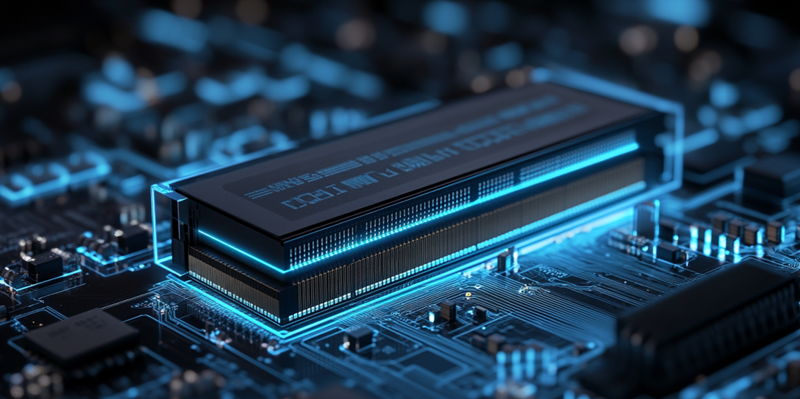Memory performance is a critical aspect of modern computing, especially for enthusiasts and professionals who demand the highest efficiency from their systems. The recent investigation by an ASUS ROG engineer into DDR5 memory settings, specifically comparing Gear 2 and Gear 4 configurations on Intel Z890 motherboards, offers substantial insights into optimizing system performance.
Unpacking Gear 2 and Gear 4 Configurations
Detailed Analysis of Gear 2 Performance
In the realm of DDR5 memory performance, Gear 2 settings have shown to provide a significant edge in both speed and latency. The ASUS ROG engineer’s extensive tests indicated that using Gear 2 settings, which operate at a 1:2 DRAM frequency ratio, the memory achieved unparalleled performance metrics. For instance, a clock speed of 9000 MT/s with CL42 timings resulted in outstanding read/write speeds and a notably low latency of 76.1 ns. This configuration was found to outperform other settings that many might deem superior on paper.
The importance of lower latency in demanding tasks, such as high-end gaming, video editing, and data processing, cannot be overstated. Lower latency means faster data access times, leading to smoother performance and quicker response times. This is why the Gear 2 setting, with its emphasis on reduced latency, can be a game-changer for users who require the utmost efficiency from their memory configuration.
Comparing Gear 4 Configuration Results
Conversely, the Gear 4 settings, which function at a 1:4 DRAM frequency ratio, did not perform as admirably in the tests. With the memory clocking a frequency of 9600 MT/s at CL46, the resulting latency was higher, hitting 85.6 ns—a significant 12.48% increase over the Gear 2 setting. This noticeable difference in performance underscores the vital role that memory settings play in overall system efficiency.
The findings revealed that higher frequency alone does not necessarily translate into better performance. The higher latency associated with Gear 4 settings can be a bottleneck, hampering the speed at which data is accessed and processed. This revelation challenges the prevailing notion that higher frequency is always better, highlighting the need for a balanced approach to memory configurations.
Implications for Overclocking and Real-World Performance
Impact on Overclocking Achievements
Beyond the laboratory tests, these insights hold considerable implications for the overclocking community. Overclockers have long sought to push the boundaries of memory speed, often achieving frequencies well above 10,000 MT/s. However, the true measure of these accomplishments lies not just in the clock speed but in the practical impact on performance. The ASUS ROG engineer’s research showed that it is not merely about achieving high frequencies but also about optimizing for latency and overall system responsiveness.
Top overclockers, including those from ASUS like SAFEDISK, have demonstrated Gear 2 speeds reaching up to 9400 MT/s on the ROG Maximus Z890 Apex motherboard. These speeds, combined with the lower latency provided by Gear 2 settings, could propel system performance to new heights, offering real and tangible benefits to users who push their hardware to its limits.
Real-World Performance: UDIMMs vs. CUDIMMs
The research also delved into the performance differences between Unregistered DIMMs (UDIMMs) and Registered DIMMs (CUDIMMs). It was found that a DDR5 8800 MT/s UDIMM without CKD (Command/Address Parity and Data Buffer) outpaced a Gear 4 CUDIMM at 9200 MT/s, delivering 12.2% lower latency and superior read/write performance. This finding is particularly significant for those who rely on UDIMMs for their systems, suggesting that these modules can hold their own, and even surpass, higher-frequency CUDIMMs in certain configurations.
This analysis prompts a reevaluation of the automatic preference for higher frequency settings or specific types of DIMMs. Instead, a more nuanced approach that considers the interplay of frequency, latency, and overall system needs may yield better results. This shift in perspective can help manufacturers and end users make more informed decisions to achieve peak performance.
Conclusion
Memory performance is a vital component of modern computing, particularly for enthusiasts and professionals seeking peak efficiency from their systems. The recent deep dive by an ASUS ROG engineer into DDR5 memory settings, focusing on the comparison between Gear 2 and Gear 4 configurations on Intel Z890 motherboards, provides valuable insights into maximizing system performance.
DDR5 memory, the latest in memory technology, offers significant improvements in speed, capacity, and power efficiency over its predecessor, DDR4. Understanding how to configure DDR5 correctly can lead to substantial enhancements in system performance, particularly for high-demand applications such as gaming, video editing, and data analysis.
Gear 2 and Gear 4 are different operating modes that influence memory timing and throughput. The insights gained from analyzing these configurations can help users better tailor their systems to their specific needs. By optimizing these settings, users can squeeze out additional performance, ensuring that their systems run at their highest potential, meeting the rigorous demands of modern applications and workflows.

